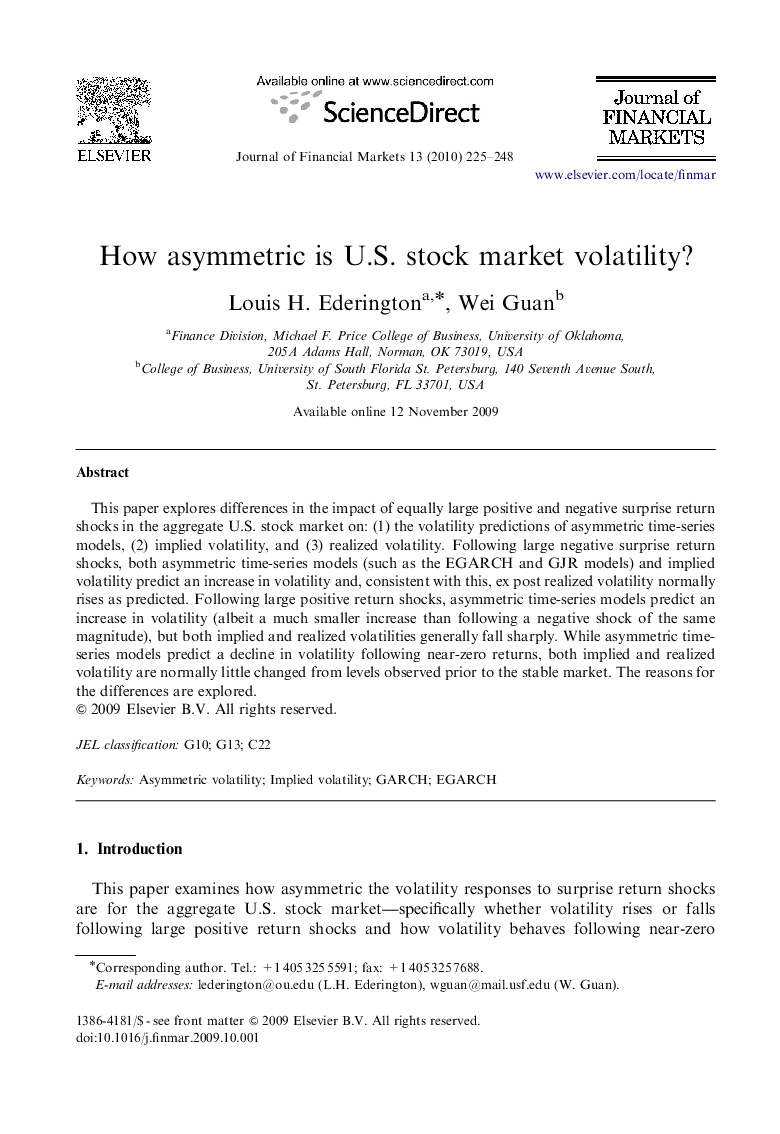| Article ID | Journal | Published Year | Pages | File Type |
|---|---|---|---|---|
| 961719 | Journal of Financial Markets | 2010 | 24 Pages |
Abstract
This paper explores differences in the impact of equally large positive and negative surprise return shocks in the aggregate U.S. stock market on: (1) the volatility predictions of asymmetric time-series models, (2) implied volatility, and (3) realized volatility. Following large negative surprise return shocks, both asymmetric time-series models (such as the EGARCH and GJR models) and implied volatility predict an increase in volatility and, consistent with this, ex post realized volatility normally rises as predicted. Following large positive return shocks, asymmetric time-series models predict an increase in volatility (albeit a much smaller increase than following a negative shock of the same magnitude), but both implied and realized volatilities generally fall sharply. While asymmetric time-series models predict a decline in volatility following near-zero returns, both implied and realized volatility are normally little changed from levels observed prior to the stable market. The reasons for the differences are explored.
Related Topics
Social Sciences and Humanities
Economics, Econometrics and Finance
Economics and Econometrics
Authors
Louis H. Ederington, Wei Guan,
